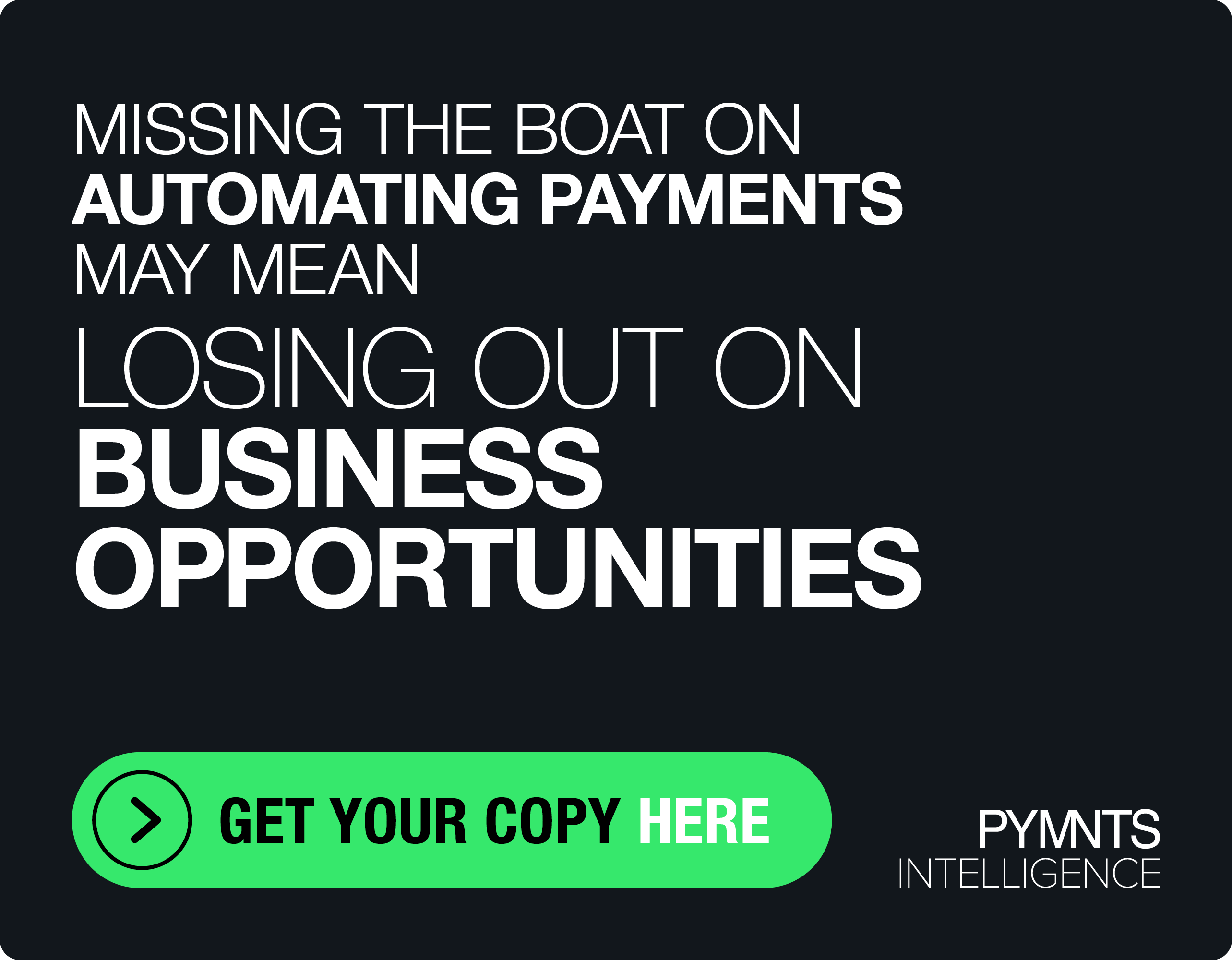NCR Voyix President Says Digital Invoices and ‘Clear’ Messaging Pave Way for Real-Time B2B Payments
B2B payments are in need of some clarity.
“Getting paid is the biggest pain point,” observed Doug Brown, president of NCR Voyix Digital Banking.
But the friction, he told PYMNTS’ Karen Webster, extends well beyond the mere act of sending and receiving payments.
Speed — and thus, real-time payments — have the potential to change some of the fundamentals of the transactions. Senders want to hold onto their cash until the last possible moment, and receivers want to get that money as soon as possible.
As the FedNow® Service and The Clearing House’s RTP® Network gain more traction, buyers and suppliers may shift away from paper checks and improve the velocity of fund flows. But faster payments alone will be no panacea for commercial transactions — not unless back office operations are modernized and improved.
“It’s the classic chicken and egg problem,” said Brown, who noted that most firms understand that they can send money more quickly; the “receiving” side of B2B payment has been slow, and may be slow, to embrace real-time options.
“There need to be incentives on both sides of the equation,” he said. For the receivers, there’s the certainty of being paid, and there can be a premium attached to that certainty, especially in a high interest rate environment.
There are some challenges to getting buyers and suppliers on board, he said, chiefly in the form of corporate inertia. It’s inertia that prevents executives from accelerating their adoption of real-time payments and new invoicing protocols and standards, the very things that will stop faster payments from generating more errors.
“People are afraid of new payment rails and deviating from the script,” he said. After all, “payments are a very complicated ecosystem.”
Corporate professionals are thus hesitant to tackle new ways of doing things in the back office, wary that change in one corner of an AP or AR operations may lead to negative ripple effects throughout the organization itself.
“They’re still going to be using check, PDFs and paper invoices,” he said — and turning the tide will take time.
Brown said inefficiencies are woven into the workflows that take place before and after the transaction. The day-to-day activities of invoicing, reconciliation and even the application of cash are riddled with manual touch points, paper and a general lack of clarity.
Pain in the Payments Supply Chain
“There’s a lot of pain in the whole ‘supply chain,’” of a payment, he told Webster, as credit unions and community banks need the aid of advanced technologies to make the management of the overall flow more transparent and efficient.
“You need a clean invoice, and instructions, sent back to somebody so they can act on [payments] — and what they’re acting on will land in the right place,” said Brown.
The ideal end-to-end flow is electronic and seamless, with a “path back” that is complete with payment options so that all parties can enjoy the benefits of clarity and a significant reduction in errors, Brown said.
In doing so, he said, “there’s a lot of opportunity, and room for improvement with the message exchanges and the formats themselves.” There’s already some evidence that executives realize the value of electronic payment options: Virtual cards are gaining prevalence in B2B commerce, he said, as they offer more protection, value and visibility, and have robust security and dispute protections built in.
Also read: How Virtual Cards Are Reinventing How Businesses Pay Their Vendors
Asked by Webster about the role of artificial intelligence (AI) and other advanced technologies in improving internal processes and protecting companies, Brown noted that NCR Voyix has been harnessing AI to help client banks and credit unions discover patterns with their own enterprise clients to help identify suspicious activity, and identify new ways to help those firms scale into new growth opportunities.
“We’re operating as an enabler to help” banks and clients help identify the right mix of payments — from ACH to real-time payments — to help capitalize on those opportunities, Brown said.
To help do that, the company split its operations last month, changing its name and restructuring into two publicly traded companies: NCR Voyix, focused on digital commerce, self-checkout and digital-first banking; and NCR Atleos, focused on ATMs, the Allpoint Network and the fleet-as-a-service businesses.
In the meantime, Brown said, providers such as NCR are endeavoring to simplify “user experience” of various payment options, while simultaneously educating corporate clients on the advantages of new and emerging payment technologies and rails — so that “when you’re ready to make the payment, it will all go cleanly and accurately.”
For all PYMNTS B2B coverage, subscribe to the daily B2B Newsletter.

